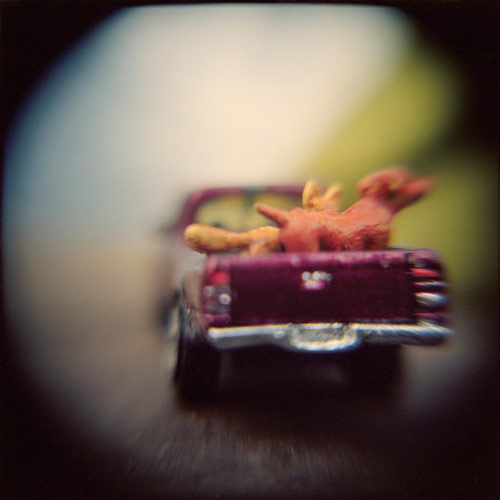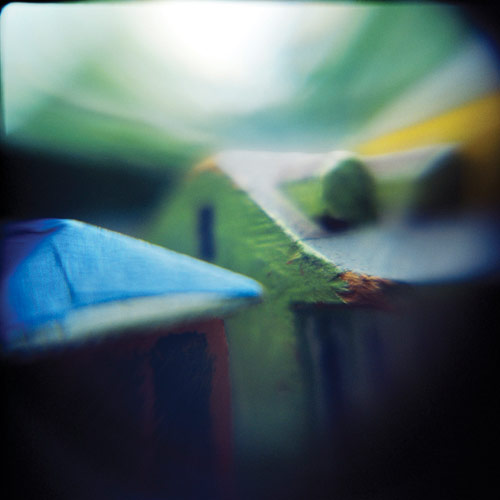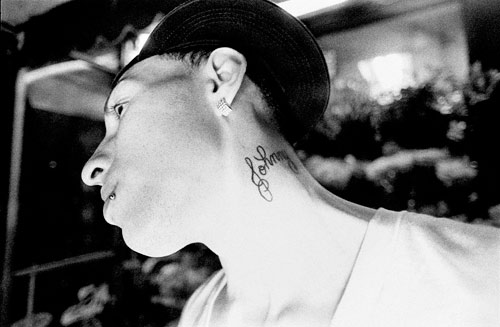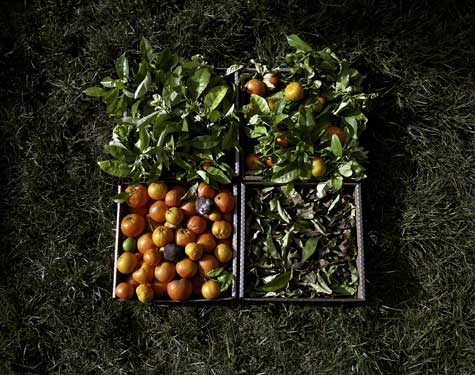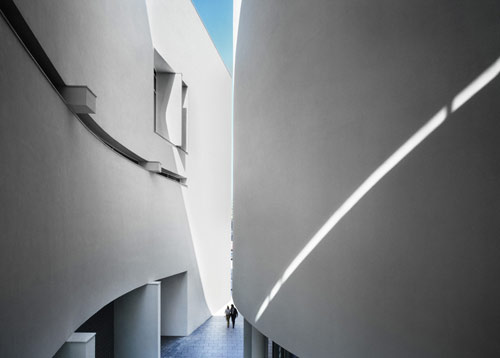
Scott Frances will show 68 large-scale works from his series MonoVisioN at the
Decoration and Design Building in NYC, opening tomorrow, June 21st. The exhibition coincides with the release of his first monograph of the same title with an introduction by Richard Meier, published by Pond Press.
Scott is a native New Yorker; he studied fine arts and journalism in Illinois, and early in his career he shot for ESTO photographics, under the auspices of the great Ezra Stoller. This show should be a beauty.

All images © Scott Frances. Thanks to Kate Greenberg.
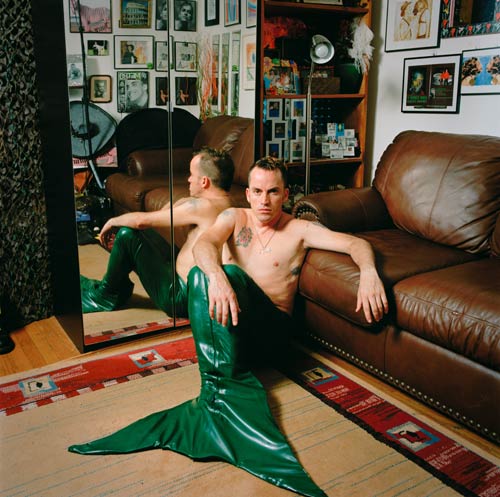
Brian Shumway was introduced to me by Kellie McLaughlin, the director of print sales at the
Aperture Foundation. Upon reviewing his work, rather than feature a single series, I decided to publish a range of his images.
"My work covers a lot of ground, from the life of children in Mormon-dominated Utah, to provocative images of models, to men who push the boundaries of gender. This diversity of subject matter is one of my work's strengths and is rooted in my background in anthropology. I'm curious about people. Whether they're family or strangers found online, I strive for every photograph to be personal, engaging, and telling. What ties my personal work together is that it speaks about people's everyday experiences, identity and fantasies."
Brian is a New York City based photographer whose worked for Reader's Digest, Smart Money, People Magazine, Wall Street Journal, Newsweek, Time, XXL, TV Guide and the New York Times, among others. His work has appeared in American Photography, Communication Arts, Shots Magazine and the Photo Review. Brian was one of Magenta Foundation's top 25 'Emerging Photographers' in the USA in 2006 and 2008. La Chureca, his story on the city dump in Managua, Nicaragua, was a finalist for the (Santa Fe) Center's 2008 Project Competition.
View the magazine full screen photo feature.© Brian Shumway 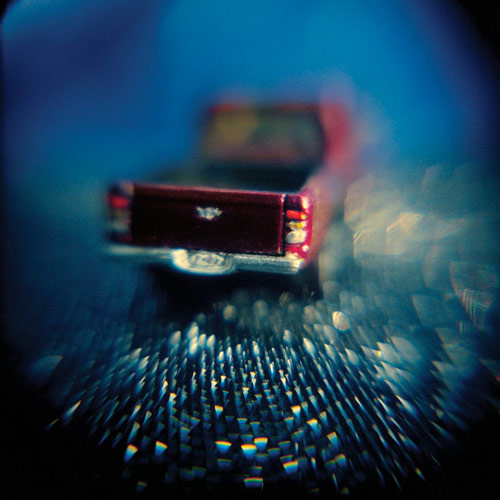 "We left in the dark of night"Stella Kramer
"We left in the dark of night"Stella Kramer had been raving about
Jennifer Shaw's '
Hurricane Story'. I was excited when she shared an early copy of the book - we both completely embraced the concept, execution and format. Jennifer Shaw was heavily pregnant when Hurricane Katrina arrived. Hitting the road with dogs, cats and husband they made their way to safety and an unknown midwife.
From Chin Music Press, the publisher:
"'Hurricane Story' is a tale of exile, birth and return told in forty-six photographs and simple, understated prose. This first-person narrative, illustrated through toys and dolls photographed with an inexpensive toy Holga camera, depicts Jennifer Shaw's strange but true tale of her evacuation from New Orleans, including the dramatic birth of her first son on the very day that Hurricane Katrina made landfall, the pressures on her marriage as she and her husband struggle with depression and rage, and their return to New Orleans with their newest family member in time for Mardi Gras. Rob Walker, 'Consumed' columnist for The New York Times Magazine, has written the book's poignant Foreword."
The simplicity of this book, and every image in it, is exceptionally engaging; everything about it just works. I strongly suggest you
treat yourself to a copy, and at $18, you can also buy one as a gift.
Returning home "The city was strangely peaceful."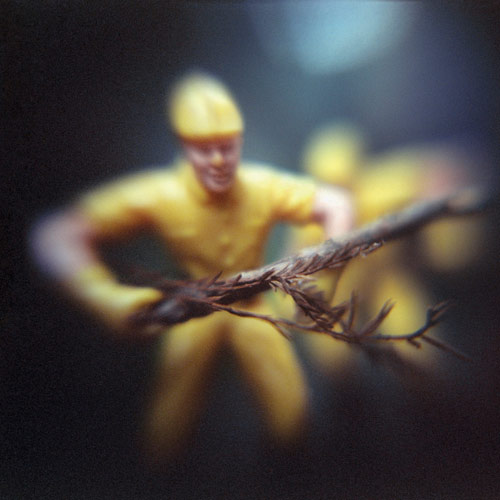
"FEMA hauled off our downed trees."
Home for Mardi Gras "Anointed in glitter, we reclaimed the streets."All images © Jennifer Shaw 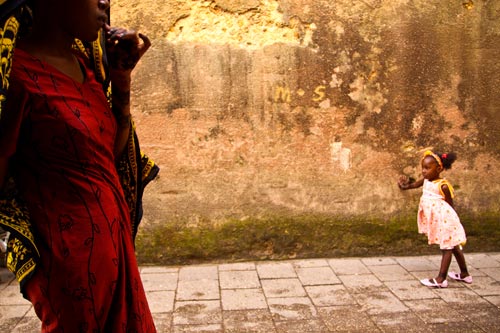 Paolo
Paolo hit me up with this ongoing project on Stone Town, Zanzibar. According to
Wikipedia the name comes from the ubiquitous use of coral stone as the main construction material; this stone gives the town a characteristic, reddish warm colour. Stone Town's architecture has a number of distinctive features, as a result of Arab, Persian, Indian, European, and African traditions mixing together.
Personally, I'm irreligious, but I do love people and culture and beautiful imagery, and helping publicize new images from hard-working photographers. Teamed with a delightful statement from Paolo, we bring you a selection from his new
Blurb Book.
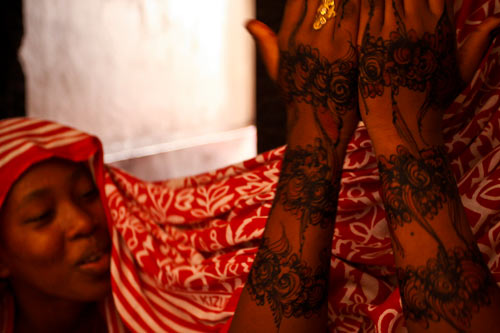
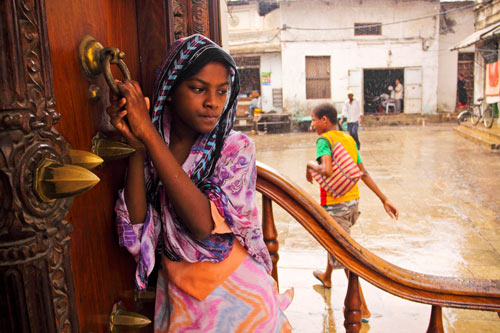

"Hidden by mass tourism, victim of an erroneous and monolithic view of
the muslim world, and subordinate to a culturally different mainland
following decades of unwanted political union, the muslim Swahili
culture of Zanzibar tries to survive against all the odds. Simply by
carrying on with their daily life, by being proud of their traditions
and by not forgetting the magnificence and splendour of what the Swahili
culture once was, the people of Zanzibar are trying
to preserve
their heritage, as well as to avoid the temptations of the western world
that day after day, through the constant coming and going of tourists,
risk destroying a place rich with culture and history.
My
personal experience in Zanzibar started by chance following a 3 day
stop-over on my way back from Australia to Italy, a stop that turned out
to be the beginning of a long-term personal project about the Swahili
culture, a work in progress that is paying me back with a huge amount
of experiences, feelings and emotions that will remain with me for the
rest of my life, a work in progress that hopefully will give justice to
this fascinating culture.
The experience time after time of
seeing the local people I have met during my stays, the joy of watching
their children growing up, the opportunity of being considered one of
them, to think of them as individuals with a personal story... this is
the magic of photography. Breaking barriers, diving deep in a culture
and its people, or as the photographer Bruce Davidson once said, trying
to document the story that the subject tells me, rather than the one I
want to tell."
All images © Paolo Evangelista
I am so honoured to be included in this, the first Photo Blog Awards from Life.com. Indeed, it was visiting the Time Life Picture Collection in 1993 when I first thought about publishing my own magazine, wanting to show more in-depth features than had become vogue. Not only in incredibly good company, including
Conscientious,
Time's Lightbox,
American Suburb X,
Burn,
Featureshoot,
NY Times Lens Blog and
NPR Picture Show, but also such a wonderful write-up.
"This is a blog in love with photographers. Scroll down aCurator's page and you'll see one photographer's name after another in bold, black letters with sharp, seductive images in between. These posts often link to glorious, full-screen features - free of surrounding navigation bars and text - on the main aCurator.com site... But the signature strength of the aCurator blog is, in fact, suggested by its name. Grahame is a curator with a flawless eye and, in her assessment of the work she presents, an immediately trustworthy, no-frills tone... aCurator's triumph is a clarity of purpose wedded to a keen intelligence, and a willingness to let its stunning photographs largely speak for themselves." - From
Life.com
I am fortunate and thoroughly privileged to have also been named in the top ten photo blogs by JM Colberg of Conscientious in his interview with the
British Journal of Photography.
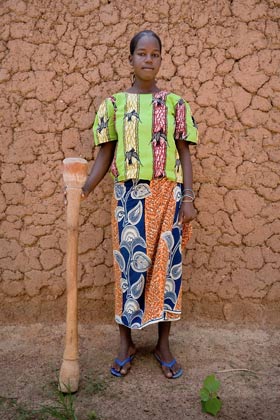
My colleague
Stella Kramer met
David Pace this year at
Photolucida and recommended his work. She thought I would particularly enjoy 'Friday Night', the week's end party in Bereba where David lives when he's in Burkina Faso. Upon visiting his website I was struck by all his images from this small, land-locked country in West Africa, so we decided to create a broader feature.
"Two of my colleagues from Santa Clara University formed a non-profit organization called Friends of African Village Libraries (FAVL) in Burkina Faso in 2001. Burkina Faso has one of the world's lowest literacy rates and FAVL builds small libraries in rural villages to help address this problem. In 2007 my colleagues invited me to visit them while they were doing research in Burkina and asked me to photograph the libraries. That was my first trip to Africa and my first experience of village life. I began taking portraits of the villagers and documenting everyday activities. It was a life changing experience.
Over the years I have developed several ongoing photographic projects in various parts of Burkina Faso. The Bereba Portraits and Friday Night portfolios are all shot in and around the village of Bereba in the southwest. The photographs of the Kiosks and the Tabtenga Quarry are taken on the central plateau near Ouagadougou, the capital.
I spend the fall teaching digital photography to American college students in a study abroad program through the University. My students stay in Ouagadougou, the country's capital, for the first weeks of instruction and then I take them to live in remote villages without electricity or running water where they photograph, experience traditional village life and do internships in rural libraries. The students study French & French Literature, developmental economics, environmental studies and digital photography. One of their main projects is to work with someone in their village and create two photo books which explore some aspect of village life. The students write texts in simple French for beginning readers. We publish the books in small quantities and take them back to the libraries."
View the full screen magazine photo feature.
© David Pace
There's a new gallery in Austin, Texas.
B. Hollyman Gallery is opening their third show on June 4th, 2011, with Texan photographer (and
aCurator favourite)
Jo Ann Santangelo. Her series 'Walking the Block' is a collection of black and white photographs documenting the LGBT community of New York City's Christopher Street. Jo Ann worked on this project for close to two years, shooting at night.

From the gallery's Q & A:
What were your intentions at the beginning of this project?
"I didn't have any intentions; it was pure curiosity, the project started pretty organically. One evening, a fellow classmate and I went to Christopher Street in search of Damion, a homeless transgender teenager I had been hanging out with, and passed Chi Chiz bar. The sidewalk scene in front of Chi Chiz was something I had never witnessed before. My friend and I hung out in and outside of Chi Chiz for the rest of the night. After a while, one of the ladies asked if we were cops, saying our presence was making some of them nervous. I admitted we were photo students and I was looking for one homeless trans kid, and she replied, "Well, we all aren't homeless." I said, "I know, that is why I'm here...I don't mean any harm." Qwana replied, "I know. That is why you are still here."
For some reason, they allowed me to not only take their photos, but welcomed me into their family. Night after night I went back down to Christopher Street."
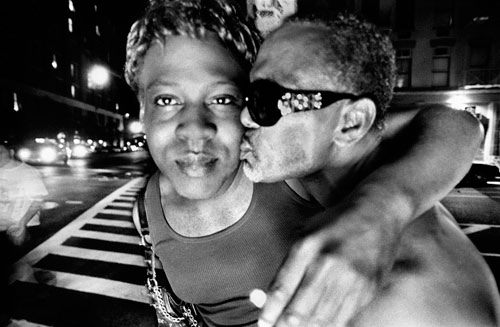
How did the project transform along the way?
"As I changed from curious on-looker to an insider my only intention was to document. It was a privilege and honor to be accepted into this community. I wanted others to see them as I did. Not just as a bunch of transgender sex workers and male escorts walking the block, but as human beings, as individuals."
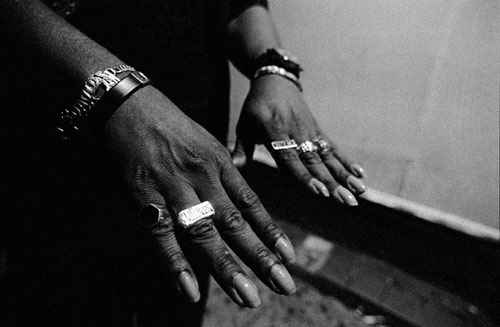
B. Hollyman's current exhibition is from another aCurator fave, Walker Pickering
"By making a connection between one's inner life and the greater world, art transforms not only what we see but who we are. At the heart of this process is empathy."
David Wolf's series 'Nurturing Time - Life in a Backyard Garden' called to mind two of my favourite books, Michael Pollan's 'The Botany of Desire' and 'Second Nature', both about our relationship to and influence on the natural world.
"I unexpectedly became a gardener when I moved into my current home, allowing me to connect with Nature in an altogether different and deeply rewarding way. In the series, 'Nurturing Time', the intimacy of a backyard garden serves as a metaphor for the greater natural world, exploring how we shape and control Nature even as we nurture it.
Our presence in Nature is depicted in arrangements I've made from plant and flower cuttings taken from my garden. I photograph the plants in isolation as types--often altering them by drying, tying or otherwise reconfiguring their appearance--and in arranged combinations that speak to associations, or suggest contradictions, presented by the assembled elements against a chosen background. A simple cardboard box acts as both neutral container and conceptual envelope to display the arrangements.
Beyond typology, 'Nurturing Time' offers us the richness of the garden and illuminates our connection to it. The assembled flower boxes resonate with a range of emotion, reflecting our own experience of the cycle of life that embraces vitality and decay, abundance and loss. Memory, Time's shadow, is present here, too, as events and lives are evoked and memorialized by these images." - David Wolf.
View the full screen magazine photo feature.
Wolf's photographs have been exhibited nationally at such venues as the Santa Barbara Museum of Art, the Griffin Museum of Photography, and the Photographic Center Northwest. He exhibited his current series, Nurturing Time, Life in a Backyard Garden, at the Lishui International Photography Festival in Lishui, China.
Orange tree: blossom, leaves and fruit 2008 © David Wolf 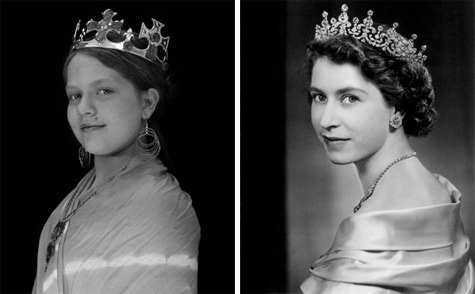
We would like to congratulate teachers Jennifer Grimm, Lydia Hardacre and Darren Vaast of Glendale School, Calgary, on the completion of their brilliant
Karsh project. Each of the Grade 5 and 6 students recreated a Karsh portrait and also made a documentary style movie based on the person they each chose.
"This project really came about through serendipity and involved a wistful desire to go to the
Glenbow Museum and a chance look at the upcoming shows to discover that a Yousuf Karsh exhibition was coming to Calgary. After an innocent email asking for permission to use Karsh portraits as inspirations, we had our final photography assignment!"
After learning about Mr Karsh's history, the students referenced dozens of portraits including Mandela, Hemingway, Schweitzer, Warhol, Hepburn, Keller, Cousteau and Bogart, researching their subjects and recreating the original photograph.
Click through to 'Finished Products' to enjoy the complete set of images and videos - you might even learn a thing or two! Nothing I did at school came close to being this cool!

Sam as Nelson Mandela /
Top: Leyla as QEII
Aimee as Audrey Hepburn.
Original photographs © Yousuf Karsh 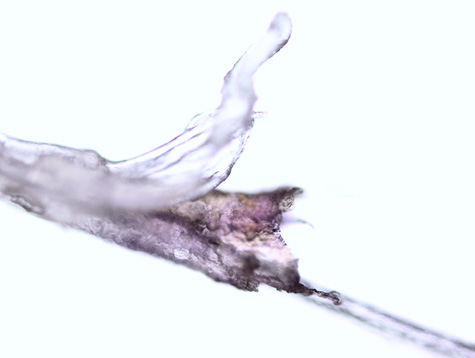
Welcome to
Aoife O'Donnell's minuscule yet magnificent world. aCurator is fascinated by these photomicrographs.
"Art and science are moving towards each other, enabling both disciplines to discover common issues and methods. Once-clear divisions are no longer reliably separate, prompting this project to represent the potential for an increasing overlap of interests. While the outcome of studies in art and science often differs, the creative imaginative processes are similar.
Micro Portraits falls under what has been deemed the genre sci-art which seeks to locate connections between the arts and science through borrowed methods and collaborations. It is the result of an interdisciplinary collaboration between the photographer and Fergus Ryan, professor of biology at the Dublin Institute of Technology. The project is concerned with alternative imaging techniques used in laboratories and the element of non-human intervention in creating imagery. The photographer is using microscopes to record images of cells, tissue, DNA and various other effluvia from her family and herself.
Removed from their usual context of the laboratory, these new genetic portraits seek to interrupt the traditional notion of the family portrait in photography prompting the viewer to consider the transformations and changes occurring inside the body on a cellular level,and questions when the alternative portrait produced by scientific imaging moves from the generic to the personal. The photographer provides a privileged opportunity for the viewer to get up close and personal with elements of the body which may previously have eluded recognition."
View the full screen magazine photo feature.
Aoife O'Donnell is an Irish visual artist based in New York City, who specializes in photomicrography. O'Donnell completed a B.A. in photography at the Dublin Institute of Technology and has previously studied at Columbia College Chicago during 2008. Upon graduating she was awarded the Dublin Institute of Technology Medal for exceptional performance. Having exhibited her current body of work entitled Micro Portraits at the Gallery of Photography, she was selected to exhibit at the Photo Ireland Festival and at RUA RED's summer exhibition 2010. Her work has also been exhibited at Filmbase, The Joinery, The Back Loft, The Homeless Gallery and The Complex. It has been reviewed in the Irish Arts Review autumn edition 2010. O'Donnell has contributed to various companies including Merc London, Red Stripe UK and Starchild Chicago. She currently divides her time working at Griffin Editions, The International Center of Photography and Rick Wester Fine Art. Micro Portraits will be exhibited at Raandesk Gallery, New York City in October 2011.
Hair Follicle, 100x © Aoife O'Donnell







